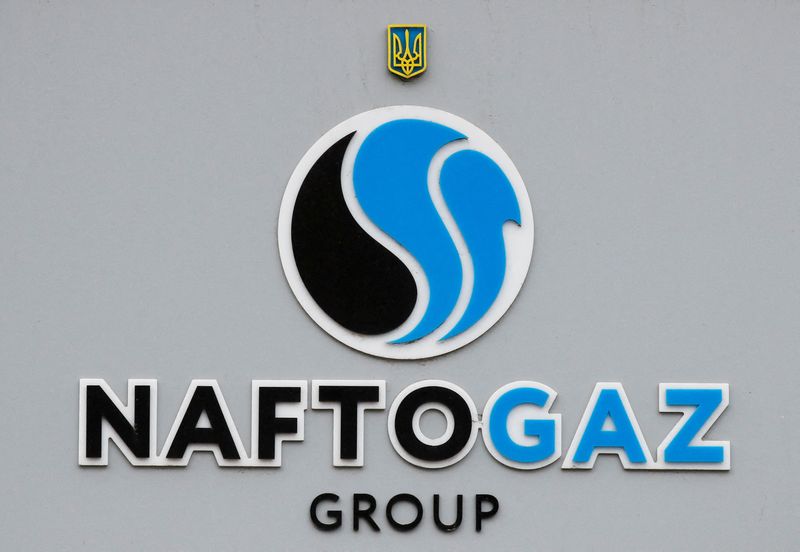Ukraine’s Naftogaz sweetens deal for bondholders in search for debt relief
2022.08.02 22:37

FILE PHOTO: The logo of the Ukraine’s state energy company Naftogaz is seen outside the company’s headquarters in central Kyiv, Ukraine October 18, 2021. REUTERS/Gleb Garanich
By Rodrigo Campos
NEW YORK (Reuters) -Ukrainian state-owned gas company Naftogaz laid out a new debt payment freeze plan on Tuesday, a week after becoming the first government entity to default since the start of the Russian invasion in late February.
The proposal includes a two-year payment freeze and two-year deferral on the maturities of the notes, which are set to expire in 2022, 2024 and 2026.
The notes would pay additional interest while deferred interest would continue to accrue at the set rates of each note.
The proposal went out to holders of the $335 million, 7.375% notes due 2022; the 600 million euro, 7.125% notes due 2024; and the $500 million, 7.625% notes due 2026.
Naftogaz’s initial proposal, sent out a week before the July 19 maturity of the 2022 note, was rejected by holders, who said they did not recognize the company to have a liquidity shortage.
The consent solicitation was launched “in light of the prolonged circumstances affecting Ukraine as a result of the ongoing full scale military invasion,” according to the document, and looks to “facilitate preservation of available cash by (Naftogaz) to support Ukraine’s strategic priorities.”
Holders have until Aug. 12 to cast their vote on the proposal, the document showed, with a meeting scheduled for Aug. 17 at 11 a.m. London time (1000 GMT).
The Ukrainian government late on Monday gave Naftogaz the go-ahead to agree new terms of restructuring its international bonds.
The consent solicitation was made by Naftogaz through its financial arm, Kondor Finance, the issuer of the notes. The default on the 2022 bond payment may trigger acceleration of payments on the other notes, but does not trigger a sovereign cross default.
Naftogaz is a major source of income for Ukraine, accounting for almost 17% of the country’s total state budget revenue last year and employing more than 50,000 people before the war.








